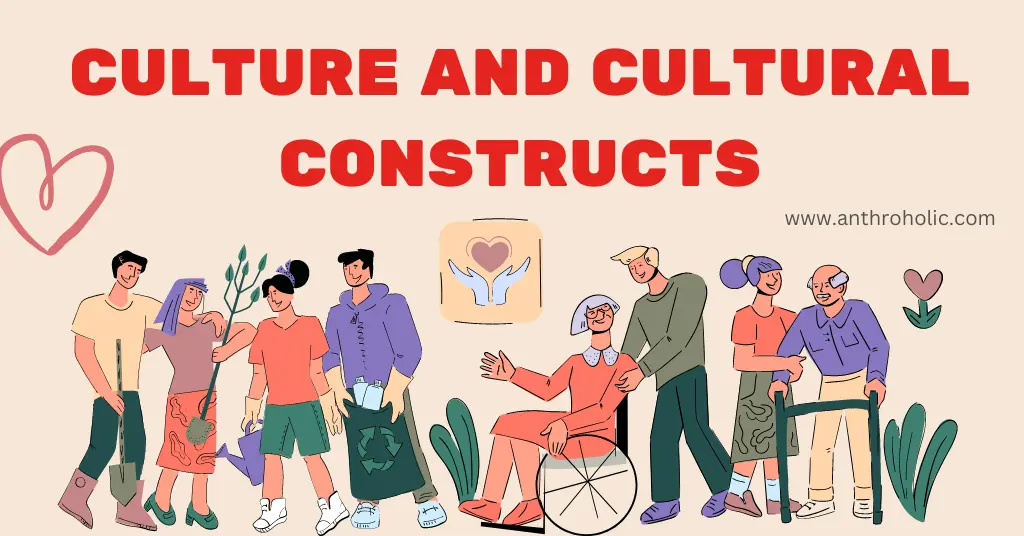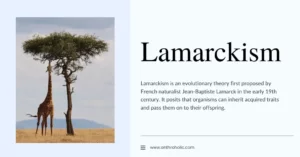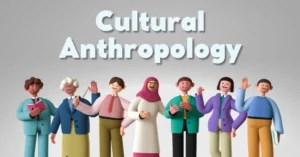AI Answer Evaluation Platform Live Now. Try Free Answer Evaluation Now
Culture and Cultural Constructs
Culture is a fundamental component of human society, a complex tapestry of shared beliefs, customs, practices, and values that define the identity of a group of people1. By extension, cultural constructs represent the concepts, symbols, norms, and institutions that are a product of this shared culture. This article delves into the intricate web of culture and cultural constructs, investigating their significance, functionality, and influence in our societies.

Understanding Culture
Defining Culture
Culture, in anthropological terms, is the sum of the ways of living developed by a group of human beings and transmitted from one generation to another2. It encompasses everything from language, religion, cuisine, social habits, music and arts, to the subtler norms of behavior and shared expectations.
The Formation of Culture
Cultures emerge as societies evolve over time. The influences behind their formation can be:
- Environmental Factors: The geographical environment shapes a culture’s development, including the climate, topography, and resources available3.
- Historical Circumstances: Wars, migration, or colonialism can dramatically influence cultural practices.
- Societal Needs: Cultures also develop in response to societal needs, like communication, security, and survival.
Cultural Constructs: The Offsprings of Culture
Cultural constructs are the shared, collective ideas or notions that originate from a culture. They play a significant role in shaping our worldviews, thoughts, and behaviors4.
Types of Cultural Constructs
Cultural constructs can be broadly classified into:
- Material Constructs: These are physical manifestations of culture, such as architecture, fashion, cuisine, and technology.
- Non-Material Constructs: These are abstract components of culture, including beliefs, values, norms, language, rituals, and symbols.
Table 1: Examples of Material and Non-Material Constructs
| Material Constructs | Non-Material Constructs |
|---|---|
| Cuisine | Beliefs |
| Architecture | Norms |
| Fashion | Language |
| Technology | Symbols |
The Role of Culture and Cultural Constructs
Fostering Social Cohesion
Culture binds people together through shared practices, values, and norms, fostering a sense of belonging and unity5. Cultural constructs, as products of this culture, help individuals understand their roles within the society.
Shaping Identity
Culture forms a crucial part of our identities, providing us with a sense of self and belonging. It is through cultural constructs that individuals learn their society’s values and norms, helping them form their beliefs and behaviors6.
Driving Social Evolution
Culture and its constructs are dynamic, changing and evolving over time. They often serve as catalysts for societal evolution, shaping our understanding of the world and pushing us towards innovation and progress7.
Impact of Culture and Cultural Constructs
On Individual Behavior
Cultural constructs often influence individual behavior. For instance, social norms (a non-material construct) guide individuals on how they should behave in a given situation, while language shapes our thoughts and communications8.
On Society
Cultural constructs are the pillars that uphold societal structures. They dictate societal values and norms, and play a significant role in defining social institutions like family, education, and government9.
The Interplay of Globalization and Culture
With globalization, cultures are no longer confined within geographical boundaries. The exchange of cultural constructs has resulted in cultural diffusion and, in some cases, cultural assimilation10. While this exchange can lead to a rich blend of cultural practices, it also raises concerns about cultural homogenization and the erosion of cultural diversity.
Conclusion
Culture and cultural constructs play a fundamental role in shaping societies and individuals. They offer an interpretive lens through which we understand our world and navigate social interactions. In an increasingly global world, understanding the nuances of different cultures and their constructs becomes critical to fostering inclusivity and respect for diversity.
References
[1] Kluckhohn, C. (1951). “Values and Value-Orientations in the Theory of Action: An Exploration in Definition and Classification”. In Talcott Parsons; Edward Shils. Toward a General Theory of Action. Harvard University Press. https://doi.org/10.4159/harvard.9780674863507.c8
[2] Tylor, E.B. (1871). Primitive Culture: Researches into the Development of Mythology, Philosophy, Religion, Art, and Custom. John Murray.
[3] Ember, Carol R., & Ember, Melvin. (2001). Cultural Anthropology. Prentice Hall.
[4] Geertz, Clifford. (1973). The Interpretation of Cultures. Basic Books.
[5] Durkheim, É. (1915). The Elementary Forms of the Religious Life. George Allen & Unwin.
[6] Erikson, Erik H. (1959). Identity and the Life Cycle. W. W. Norton & Company.
[7] White, Leslie A. (1949). The Science of Culture: A study of man and civilization. Farrar, Straus and Giroux.
[8] Whorf, Benjamin Lee. (1956). Language, Thought, and Reality: Selected Writings. MIT Press.
[9] Parsons, T. (1951). The Social System. Free Press.
[10] Appadurai, A. (1996). Modernity at Large: Cultural Dimensions of Globalization. University of Minnesota Press.



